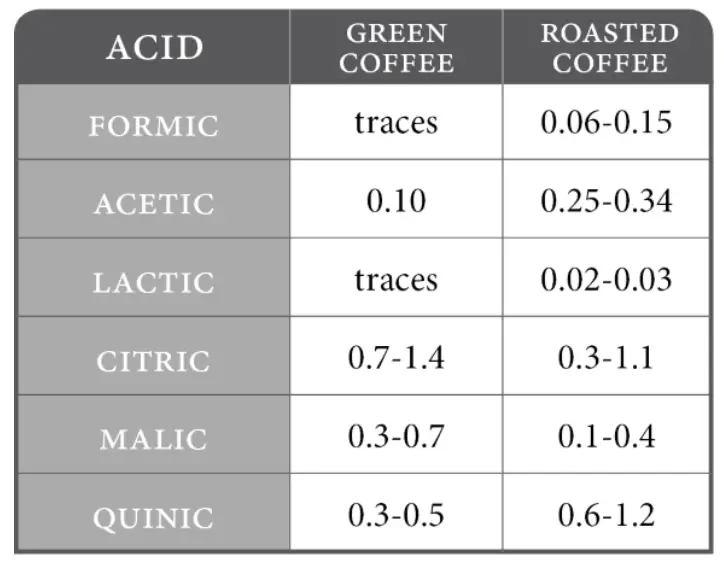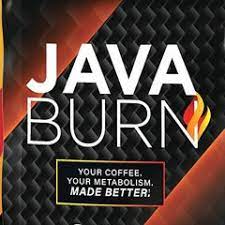You’ve probably been in a situation where you’ve tasted a super sour coffee and have decided that nothing was worth drinking the rest. There are reasons why the same coffee can taste completely different when prepared differently. When prepared poorly, the acidity in coffee causes undesirable effects. That’s why many people and shops try to prepare their coffee with low acidity.
Acidic coffee doesn’t only taste sour and dull, but also has unwanted health effects. In this article, I’ll show you ways to reduce the acidic nature of coffee. There is no getting rid of acidity, but there are ways to reduce the amount you have.

Acidity in Coffee
Many of us have experienced a cup of coffee that leaves us with an upset stomach or bad heartburn (my fellow GERD suffering coffee drinkers can relate!). If you want to be able to make low acid coffee, it is important to understand the background.
Acid in coffee can cause coffee drinkers to experience reflux, irritable bowel syndrome (IBS), and even gastric ulcers. All of this leads to the uncomfortable feeling you get in your stomach. The truth is that you will never get rid of acid in your coffee, but learning how to make your coffee correctly (and using the correct kind) will reduce the chance that you will experience any of these issues.
Side Effects from acidic coffee
- Acid Reflux/GERD
- Irritable Bowel Syndrome (IBS)
- Gastric Ulcers
- Bitter Tasting Coffee
There is a difference between acidity and acid (science lesson!). Acidity is measured on a scale of 0 to 14 called the pH scale. 0-7 is acidic, 7 is neutral, and 7-14 is basic. The pH of coffee is typically around 4.85-5.10. This means that MOST coffee is acidic. However that is only because it contains… ACID. One way to improve the acidity of coffee is to use alkaline water (basic pH of 7-14) to naturally increase the pH of the coffee. It is important to note that changing the acidity (pH) of the coffee will not stop the effects of the acids that are present.
Chlorogenic Acid vs quinic acid
Baking Soda works in a similar fashion to alkaline water. The pH of baking soda is around 8-9 and will neutralize acids in coffee. Adding just 1/4 teaspoon will ease some the harsh flavors of acidic coffee.
Other acid reducers such as Neixum and Prevacid can be added in a similar fashion to neutralize the same acids. These and other acid reducers are able to neutralize up to 90% of the acid in coffee.
Some other things you can add to your coffee to reduce acid are milk and cream. Milk and cream help to make the bitter taste a little easier to drink and also reduce the acidity.
Location
Where you source your coffee from can have an impact on how much acid is present in your coffee. Chlorogenic acid is more prevalent in coffee beans that are grown in higher elevations. Inversely, if you can grow coffee beans in a lower elevated climate, then these beans will have less acid in them.
The reason higher altitude coffee beans have a higher amount of acid in them is that at higher altitudes, coffee beans grow at a slower rate than at lower altitudes. This leads to the higher altitude beans growing more complex molecular structures in their maturation process. These structures include chlorogenic acid.
The lower altitude coffee beans grow faster and do not have as much time to mature and develop these acids.
Follow us:
MonsieurCoffee.com is a participant in the Amazon Services LLC Associates Program, an affiliate advertising program designed to provide a means for sites to earn advertising fees by advertising and linking to Amazon.com. We earn small commissions on purchase made through links on this site, at no extra costs to you.
Click Here to See How
More Posts

Why are Chemex filters so expensive? Question Answered!
I love making coffee with a Chemex. It is a great piece of gear and the coffee you get from it is just delicious. But

the ultimate guide to roasting coffee beans at home
Roasting your own coffee beans at home is all about taking your coffee experience to the next level. Having access to freshly roasted coffee beans
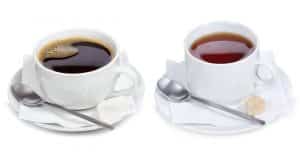
Is coffee technically a tea? Answered By Monsieur Coffee
I had a discussion with a friend the other day. He stated that coffee is actually a tea. I was dumbstruck. How can you say

Can you make regular coffee with an espresso machine?
For most adults, having a hot cup of coffee in the morning is how the day starts. From percolators to drip brew coffee pots to
Save this post for later? We'll send you the article!
Follow us:
Best Low-Acid Coffee Options
Below are some of my recommendations great tasting low acid coffee. While you will never end up with no acid in your coffee, you want to come up with the perfect combination of acidity and sweetness. That is what makes making the perfect coffee so challenging, but the following coffee do a great job at giving you an option for coffee with low acid.
Lifeboost coffee is one of the best options when it comes to low acid coffee options. Lifeboost sources their coffee beans in Central America because the location of coffee beans can determine how much acid is present. The elevations in Central America provide excellent conditions to grow low acid coffee beans. Their beans are at a pH of 6.0+ and do not contain any mycotoxins.
Lifeboost Coffee has received very positive reviews for their smooth tasting coffee that is easy on the stomach. This is by far my favorite option when it comes to choosing a coffee that will be easy on my stomach. Their whole brand is tailored around low acid options, but if you want to get the coffee with the lowest acid possible, I would recommend choosing a dark roast of theirs.
*Their website is offering a 15% discount to new customers.
Java planet has created two versions of their coffee that contains low acid. These are their Guatemala Organic and Columbia Organic roasts. Both of these beans are sourced from their respective countries of Guatemala and Columbia (high altitude climates). Sourcing from these countries allows the coffee beans to be enriched with smooth, aromatic flavors. This is great for people who have had negative reactions to bitter, sour coffee in the past.
Java Planet is Fair Trade certified and is an environmentally friendly coffee bean grower. No fertilizers or pesticides are used during growth to protect you and the environment from harsh chemicals.
Volcanica sources their coffee from Brazil, Sumatra, and various other countries and blends them to create their own low acid coffee. Their low acid version promises to be easy on sensitive stomachs and acid reflux while still providing a great taste. The batch I tasted was a medium roast, so this wasn’t my favorite (but I am very biased towards my dark roasts), but they do have a collection of different roasts as well as espresso, decaf, and cold brew.
Puroast’s claim is that it lowers the amount of acid in coffee by 70%. This is a coffee that I am able to drink without experiencing any stomach issues. These are the best single serve option when it comes to low acid coffee. Of course, you could always fill your own K-cup with the other roasts mentioned. Your options from Puroast’s low acid coffee are a French roast and a dark roast. While both are great options, I prefer to go with the dark roast.
Ways to Reduce Coffee Acidity
Along with using low acid coffee beans, we want to teach you how to keep your coffee at a low acidity as well as show you certain mistakes to avoid. When using the strategies detailed below, you should end up with a smooth cup of coffee that won’t upset your stomach.
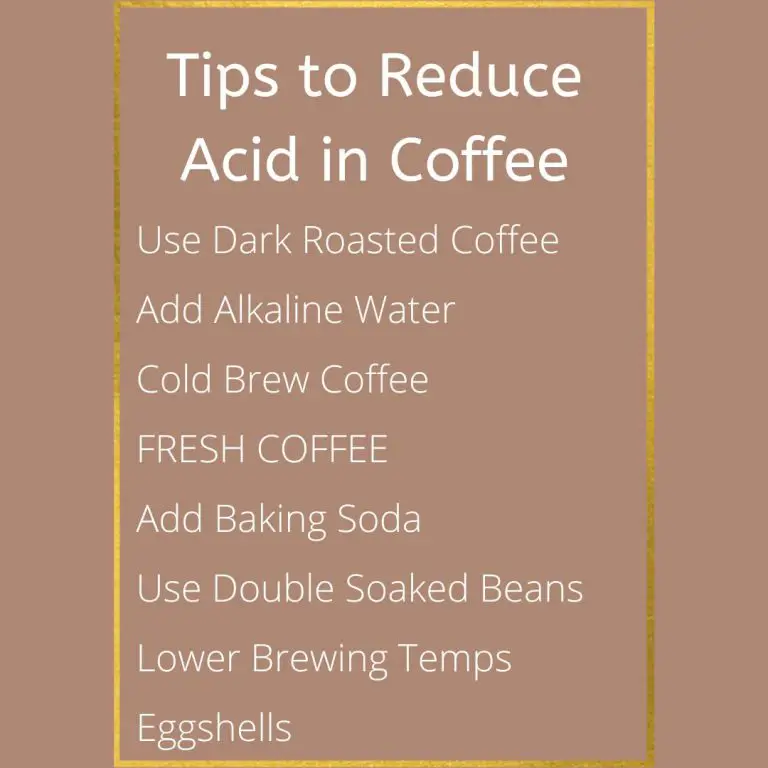
Dark Roasted coffee
Dark Roasted Coffee contains a lower amount of acid than other roasts. What is strange is that the acidity level is the same as medium and light roasts. When a dark roast coffee is brewed, it releases a different chemical makeup than other roasts. It can contain N-methylpridinium. This chemical compound can results in producing LESS stomach acid. Stomach acid is what can cause GERD and reflux flare-ups that can be very painful and uncomfortable.
alkaline water
Alkaline is a term that refers to something having a basic pH level (pH of 7 to 14). Coffee has a natural pH around 5. When using alkaline water, you raise the pH of your brew. While this affects the acidity of your coffee, it does not affect the acids that are present. The acids will still enter your body and have their natural reactions.
However, this does have positive health effects. Prolonged drinking of liquids with low pH can effect your teeth over time and cause cavities. Raising the pH closer to a neutral level negates this effect and isn’t as bad for your teeth. Of course, keeping proper care will be the best course of action for keeping cavities away!
Cold Brew
As I have previously mentioned, heat converts the “good” chlorogenic acid to the “bad” quinic acid. When making cold brew coffee, you eliminate the heat that catalyzes the reaction from chlorogenic to quinic. Cold brew coffee is much smoother and better when dealing with stomach issues when drinking coffee.
This method decreases the acid amount by around 70% without eliminating any of the taste! The only downside is the brew time compared to hot coffee. It could take up to 12-24 hours to make a batch of cold brew, but with a little bit of planning, you could make a large batch of cold brew for the week.
Drink Fresh Coffee
Allowing coffee to sit lets quinic acid form. The BEST way to drink coffee is when it is first made out of the pot or out of your single serve machine. Letting your coffee sit around in the pot for a while allows chlorogenic acid to convert to quinic acid, which is the bad version of the two acids and will lead to stomach-aches and GERD symptoms.
Baking Soda and Acid Reducers
Baking Soda works in a similar fashion to alkaline water. The pH of baking soda is around 8-9 and will neutralize acids in coffee. Adding just 1/4 teaspoon will ease some the harsh flavors of acidic coffee.
Other acid reducers such as Neixum and Prevacid can be added in a similar fashion to neutralize the same acids. These and other acid reducers are able to neutralize up to 90% of the acid in coffee.
Some other things you can add to your coffee to reduce acid are milk and cream. Milk and cream help to make the bitter taste a little easier to drink and also reduce the acidity.
Double-Fermented Beans
The process of fermenting coffee beans includes stripping away the tough husk and ferment the fruit pulp of the bean. Fermentation includes a breaking down of something by the use of microorganisms. Other known substances that are fermented include alcohol, kimchi, and kombucha.
Typically, coffee beans are only fermented once, but by double fermenting the beans, you can reduce the amount of acid and bitterness in your coffee beans. A double fermentation can often be referred to as a “double soak”.
If you want to search for manufacturers that double ferment ferment their beans, look to see that they “double soak” them.
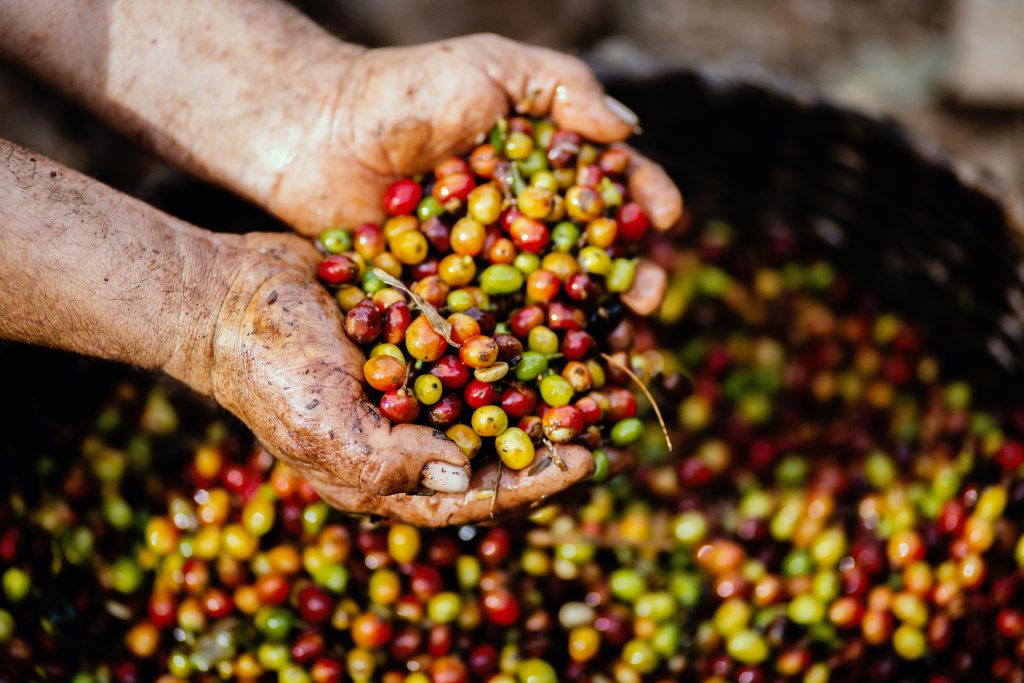
Lower Brewing Temperature and coarse grind
A lower brewing temperature (194-196 degrees F or 90-91 degrees C) allows you to brew a low acid coffee. In order to do this, it is super helpful to grind your coffee beans very coarse (check here for our review of the best coffee grinders). This allows the lower temperatures to extract more flavor. When lowering the temperature, you will have to increase the extraction time of your low acid coffee. A larger grind size will also reduce the amount of acid in your coffee. This is because smaller grinds secrete more acid into your coffee.
Add Eggshells
Tell me if you’ve heard this one before. You can add crushed eggshells along with your coffee grounds to reduce the acid in your coffee. To do this, get two cracked eggs, wash the eggshells to remove all of the yolk and the white, and crush them down to smaller pieces. Add them to your grinds whether it is in your coffee, maker or pour over.
You can also do this in a saucepan with water, coffee, and the eggshells. Bring the mixture to a boil for just a few minutes, and then filter out the grounds and eggshells through a strainer.
How does this work? Not much has been researched to why this works, but the eggshells are made out of calcium carbonate, which has a higher pH. Adding the eggshells to your coffee brewing will make the pH higher for your coffee.
Common Questions Answered!
Q: Does tea contain less acid than coffee?
A: Yes! Tea can contain less acid than coffee, leading to less heartburn, and a less bitter taste.
Q: How much acid do “green” coffee beans contain?
A: Green coffee beans are unroasted beans. Because of this, they have not undergone the roasting process, which naturally releases acid in the beans. This results in beans that contain mostly chlorogenic acid (the GOOD kind) and N-methylpyridinium, which causes you to produce less gastric acid in your stomach.
Q: Does the amount of caffeine affect the amount of acid in the coffee?
A: The amount of caffeine in your coffee does not have any interaction with the acids in the coffee. However, the amount of caffeine could have interactions with the gastric juices that are produced in your stomach when you drink coffee, causing stomach pains and GERD.
Q: Will I be able to have acid free coffee if I follow all the tips in this post?
A: No, you cannot completely remove acid from coffee. You can however remove as much quinic acid as you can, which can lessen the bitterness and reduce stomach issues when drinking acidic coffee. Knowing this, each coffee manufacturer attempts to blend the bitterness of the acid in coffee to an added sweetness to create a perfect taste.

